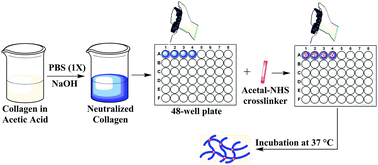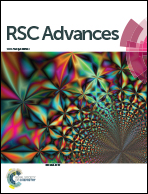An acetal-based polymeric crosslinker with controlled pH-sensitivity
Abstract
Even though collagen hydrogels have been used in many biomedical applications due to their unique characteristics, they lack in mechanical stability and resistance to enzymatic degradation. Aiming at the elimination of these drawbacks, collagen hydrogels have been crosslinked with a variety of synthetic crosslinkers all of which presented increased toxicity, which resulted in their limited use in biomedical devices. In order to overcome this limitation, a branched copolymer based on N-hydroxysuccinimide (NHS) activated poly(ethylene glycol) (PEG) groups was synthesized by in situ deactivation enhanced atom transfer radical polymerization (DE-ATRP) and used as crosslinker for collagen hydrogels. The NHS-PEG polymer was modified with labile acetal linkages (acetal-NHS) which made it responsive to pH-alterations and its responsiveness was studied at various pH. The activated acetal-NHS polymeric crosslinker demonstrated long-term stability at neutral pH but underwent hydrolysis at acidic pH, showing strongly pH-dependent degradation properties. By using the acetal-NHS polymeric crosslinker, collagen hydrogels with controlled degradation profiles were fabricated. Both the acetal-NHS crosslinker and the crosslinked collagen hydrogels exhibited excellent cytocompatibility.


 Please wait while we load your content...
Please wait while we load your content...